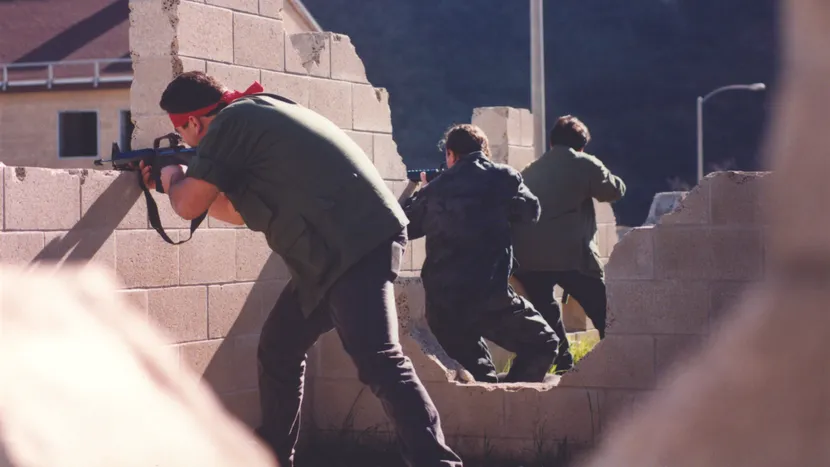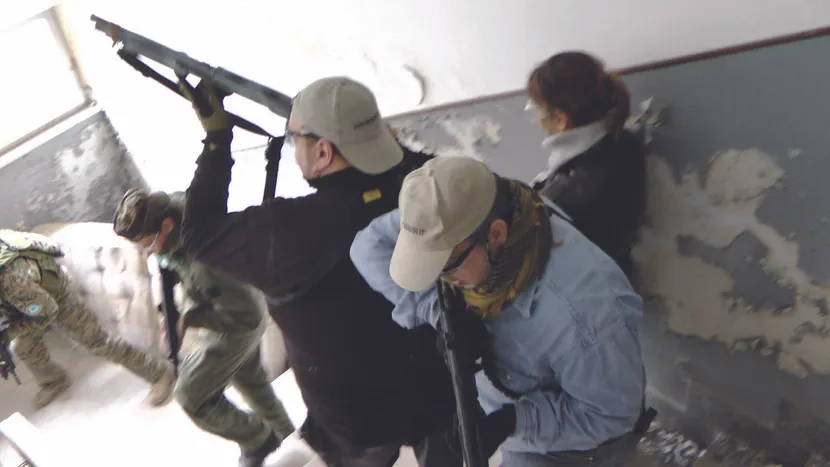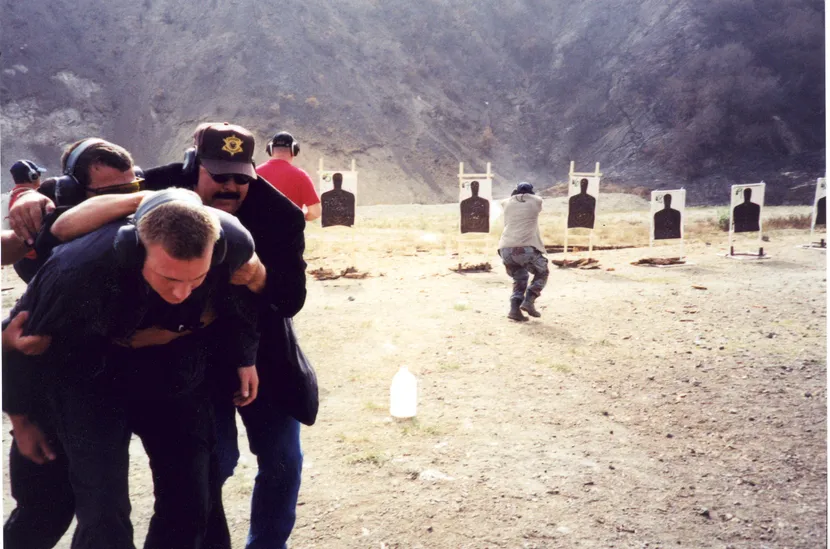June 19 | 2021

Fighting two or more attackers, even if they are unarmed, is a “worst case scenario.” However, as with any conflict, there are rules that can help you survive it. Here are six of them that you must commit to memory.
1. Look for attackers
Situational awareness is the first step to avoiding a confrontation with multiple attackers. Criminals and terrorists are not ghosts. They don’t just appear out of thin air and attack you. Before the conflict, your attackers will be somewhere in the environment, and they will either be waiting for you to unwarily enter their “kill zone” or they will approach you. Either way, if you are constantly scanning the area for any suspicious persons or activity, you may detect them before it’s too late. Any advance warning, no matter how slim it may be, gives you both decision and reaction time.
2. Don’t be distracted
While in any potentially hostile environment, don’t be so absorbed in your thoughts, locked into a conversation with others, or distracted with devices, that you don’t bother to scan your surrounding for potential danger. Whenever you are engaged in these activities you can still scan the area every several seconds for tell-tale signs: the sights, sounds, and smell of trouble.
3. Attack the attacker

These Iraqi insurgents are ambushing American military personnel. Well, they’re not actually Iraqis. They are role players I trained for war games several years ago when I oversaw a training cycle at Camp Pendleton, California. I was responsible for training Soldiers of the U.S. Army 19th Special Forces and Marines from the 1st Marine Division.
When I was a military tactics instructor during the Iraq War and Afghanistan War, I taught American Soldiers, according to U.S. Army doctrine, how to survive an ambush, which was IMMEDIATELY COUNTERATTACK THE AMBUSHERS. The definition of “ambush” is to attack by surprise from a hidden place.
The natural reaction when ambushed is to hunker down on the spot and fight. However, the enemy chose the location for specific fields of fire. Staying in a defensive position in the fatal funnel will just get everybody killed, and that is exactly what the enemy wants.
Soldiers caught in an ambush must immediately pick a point, concentrate all available fire power on that point, and try to punch through the enemy line with decisive movement to escape. Likewise, if you have multiple attackers coming toward you in a civilian self-defense situation, and you are trapped in their fatal funnel, you need to pick one of the attackers, immediately incapacitate him, and push past him before the rest of them swarm you.
4. Don’t get caught in the middle

Here’s what can happen when a student gets sandwiched by multiple attackers. He is immediately taken to the ground and stomped on. Notice that I have the “victim” wearing a hard-shell helmet for protection, plus in this Crime Survival course I supervise the fight to make sure nobody gets hurt. I believe in reality-based training, but not real injuries.
Whatever action you take, do not get in between two attackers. We call this a “sandwich.” Metaphorically, the attackers are the two pieces of “bread” and you’re the “dead meat” that’s sandwiched in between.
The key to preventing yourself getting into this position of disadvantage is to always keep yourself in front of one attacker while forcing the other one to stay behind him. This may take some quick flanking movements on your part, to keep the other one from getting to you, but it’s essential. If you do end up in between two attackers, your attention will undoubtedly be divided, and you will be sucker punched or worse. Therefore, the general rule is YOU CANNOT FIGHT TWO PEOPLE AT THE SAME TIME. Action movies may make it seem possible to take on multiple attackers at once, but Hollywood is a poor self-defense teacher.
5. Violence of Action
Not only have I had the privilege of training U.S. Army units for three decades, but I’ve trained extensively with the United States Marine Corps as well. One of their concepts that I learned from them, and it rubbed off on me, is what they call Violence of Action. This means that once you have decided on a plan of attack, or counterattack, you launch it with 100% commitment and completely overwhelm the enemy. OORAH! Likewise, when two or more attackers are coming at you to harm you, and violence is imminent, you must commit to hard hitting tactics with 100% effort. A timid response will not be enough for such a life-threatening event. In your fierceness, your Violence of Action, you will either defeat your attackers, make them back off, you escape, or you die in the process. Submitting to the attackers is not an option.
6. Use deadly force
If two or more attackers intend to do you harm you may give them a warning to back off, but if they proceed to aggress you, then deadly force may be the only option for your survival. Deadly force is a legal term that means that you are in fear of your life, or of great bodily injury, and the only option available to you is to severely injure or kill. Legally you are only trying to “stop” the attack, but when using deadly force an attacker could be seriously injured or killed in the process. You only use deadly force when reasonable force will not stop the attack where you are likely to sustain serious injury or death, and you were unable to escape without using such force.
When I teach my Reality-Based Personal Protection course titled Crime Survival, I have each student go up against two or more attackers in a contact fight. Of course, adequate protective gear is worn by all the participants.
The “victim” starts at one end of the room and he or she must get out the front door that is blocked by the two attackers at the other end of the room who will try to keep him or her from escaping. The door can be a literal door, or the “door” can be represented in the training area by two columns of stacked cardboard boxes or two duct tape lines on the ground that indicate an exit opening.

The woman, role playing the Italian Ambassador in a country that is collapsing, is being protected by an Italian dignitary protection unit who must get her safely out of the country. I set up the scenario where they are ambushed between leaving the “Italian Embassy” and her limousine. When attacked, they performed flawlessly their counter-ambush techniques and tactics, and they got the Ambassador to the “airport.” This training took place in Caorle, Italy.
No matter who the “victim” is, all the flowery or fine motor skills techniques evaporate in the first few seconds of the fight, giving way to only the simplest and hard-hitting techniques and tactics. If not during his or her first fight, then definitely during the retry after their first defeat.
In multiple attacker fights, based upon my own experience and supervising hundreds of such fights, there are almost no kick combinations used, rarely is an elbow strike thrown, occasionally a student will do a head butt, once in a blue moon a knee strike will be attempted, and kicks above the pelvic are virtually nonexistent. Those who try a kick to the head learn quickly that it’s suicidal. For those single kicks that are successful, they are almost always simple front thrust kicks, and even those are always at belt level or below. Again, I am talking about street fights, not an MMA match.
When my students are up against multiple attackers they learn to stick with conservative techniques, not because I tell them to, but because of compressed decision-making time and the brutality of multiple attacker fights. The situation forces them to adhere to the K.I.S.S. principle (Keep It Simple Stupid).

That’s me on the left (in the blue cap and red shirt) supervising the Counter Assault Team (CAT), who are counter-assaulting the ambushers (the silhouette targets) as the Executive Protection team gets the principal out of the Kill Zone. This law enforcement training took place at the Burro Canyon Shooting Park in Los Angeles, California.
Unfortunately, most of my students, when first thrown into this multiple attacker fight, use impact force (in legal terms it is reasonable force). In other words, they’ll use sport martial arts, which is a lot of punching. Out of every 20 students, the average is that only 2 will make it out the door. The rest are taken down by the multiple attackers. And I’m not talking about a bunch of wimps either. In any given course, my students include Special Forces Soldiers, police SWAT Team operators, Krav Maga instructors, Karate black belts, doormen, security agents, and some beginners. However, after the first attempts are completed, I instruct my students and future instructors that this is a deadly force situation and they must use deadly force techniques: eye gouges and throat strikes, crushing knee breaks, kidney shots, and pull out a legal weapon or make use of an improvised weapon. For me personally, going to a weapon is a no brainer when facing two or more attackers, even if they are unarmed. Of course, my law enforcement background forces me think like this. If two unarmed attackers try to take down a police officer, the use of deadly force is warranted by that officer, provided there was not sufficient distance to use a less-lethal weapon or other officers immediately on scene to assist. Plus, thinking beyond the proverbial bar fight, most criminals are armed, so you had better have a good weapon in hand for a multiple attacker fight, even if it is only a good sturdy metal business pen with a very sharp point. That tool just as good as a prison shank or shiv (a prison made knife-like weapon).
BE A HARD TARGET
Follow Jim Wagner on:
